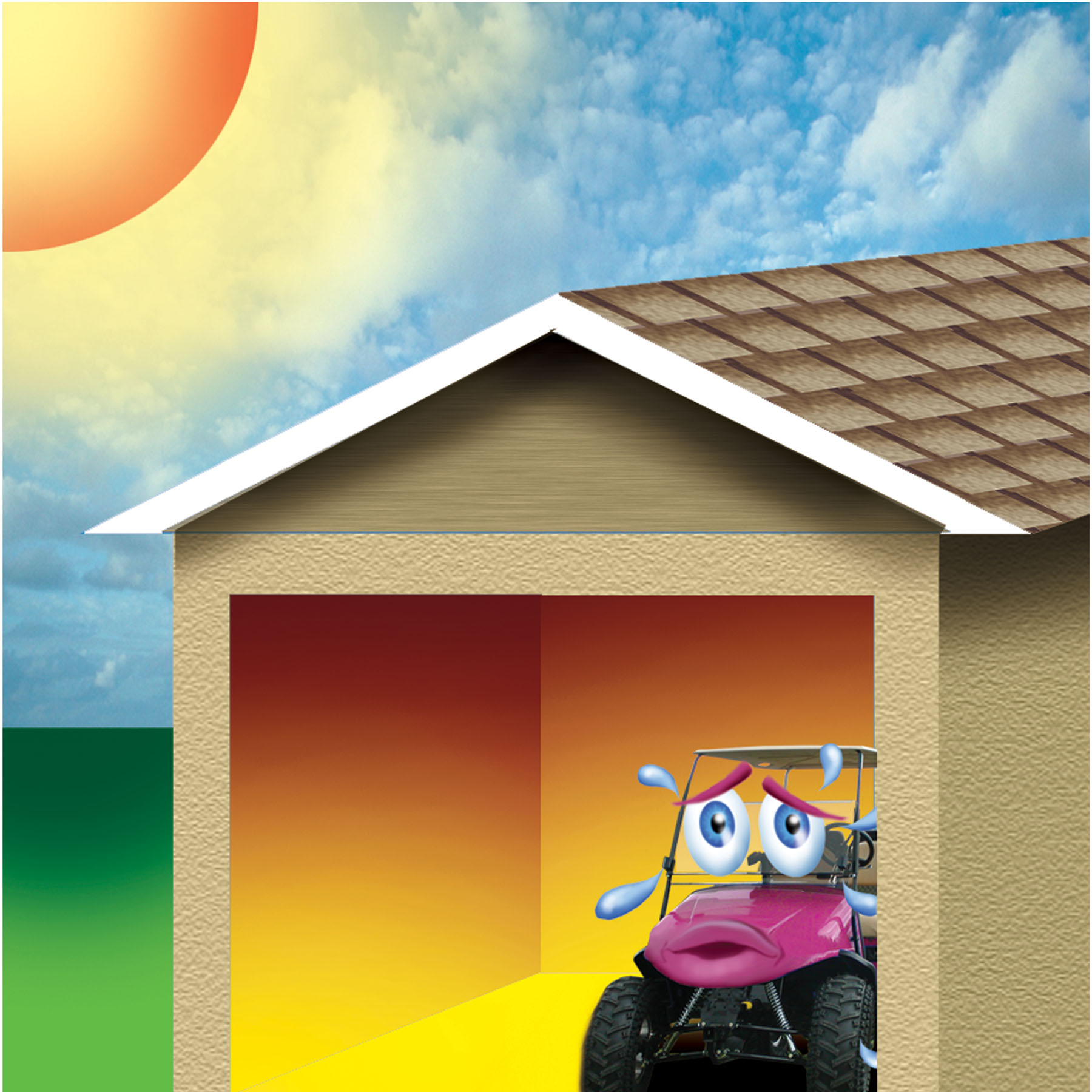Dear Ray,
The garage attached to my town home gets the full afternoon sun. The temperature in the garage has reached 110 degrees at times this summer. There is some attic space above the front half of the garage and two bedrooms over the rear half, both of which get very warm during the summer. Would an insulated garage door help keep the garage cooler, or is there a way to vent the garage to remove some of the hot air? I have a roll-down screen, but in the summer it does not seem to offer much relief from the heat.
— Pam McC., Largo, Fla.
Dear Pam,
No wonder your garage is an oven. Its orientation couldn’t be worse. As the day progresses and temperatures climb, they often peak between 4 and 5 p.m. This is exactly when the direct rays of the sun are cooking everything they shine upon, including your garage, your home and everything in it.
Add to this the heat from any cars that have been on the road and then are parked in the garage. All of the car’s mechanical parts can be very hot after it has been driven for just 10 or 15 minutes in the summer months. Some parts, such as disc-brake rotors, can easily exceed 250 degrees. The car will radiate heat into the garage for hours after it is parked. If you were to install an insulated garage door and close it, you would trap this heat inside the garage, where you don’t want it. An insulated garage door may be a great idea for other times of year, but in summer it becomes problematic using typical garage door insulation. There are new products available that work very well at www.coolmygarage.com.
Just as the metal parts in your car absorb and radiate heat, so do all of the objects in the garage. Think of how a dying campfire’s embers and the rocks that surround it radiate heat for hours after the flames have died. This low-level infrared heat can be felt inside a garage even early the next day. I know, because my own garage gets very hot in the summer months. Very commonly when I go into the garage in the morning, I notice it’s 10 to 15 degrees warmer than the outside air temperature.
The heat from the garage will absolutely contribute to high temperatures in the attic space above as well as the finished rooms especially in a 2 story home. Hopefully the ceiling cavity between the garage and the finished spaces was insulated. If not, you may want to consider adding blown-in insulation.
To cool your garage as efficiently as possible, you probably will need to install one of our two powerful garage ventilation fans. These fans are designed to pull air through the garage and exhaust it back outdoors or into the attic space. But keep in mind they will rarely, if ever, be able to drop the temperature lower than the outdoor temperature. This means if it is 90 degrees outdoors at 5 or 6 p.m., it will probably be in the lower 90s inside the garage. If it is 90 outdoors, typically it is 110 degrees in the garage and upwards of 140 degrees in the attics.
The fan must have plenty of incoming air to feed their voracious appetites. You will probably have to keep the garage door up off the floor about 4 inches to ensure plenty of air from outdoors is flowing through the garage or install vents in the garage door that we offer. The fans will do the best job of cooling if they are located high on the wall or in the ceiling directly opposite the garage door.
The air stream will seem very cool to you if you stand in it. But don’t think the objects in the garage feel as cool as you do. You feel cool because the evaporating perspiration on your skin is rapidly extracting heat from your body. The inanimate objects in your garage don’t sweat, so they will take a while to cool down. Consider putting the fans on a timer that allows them to run for several hours or use a thermostat to control when they go off. We offer thermostats that will turn the fan on and off at predetermined settings or use the thermostat by pass switch to operate it at your desired times.

